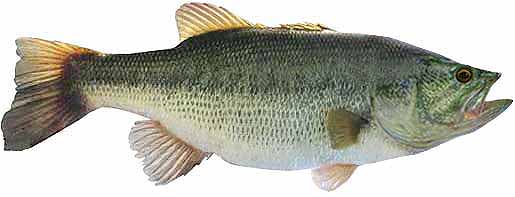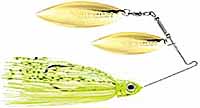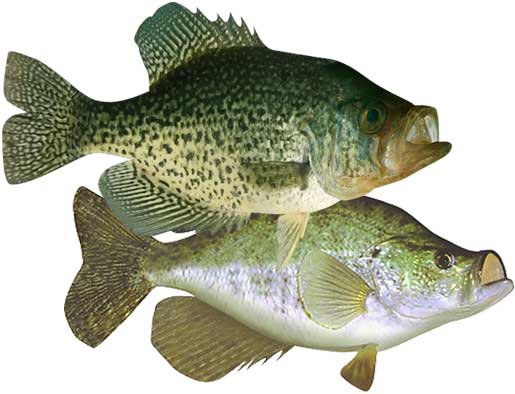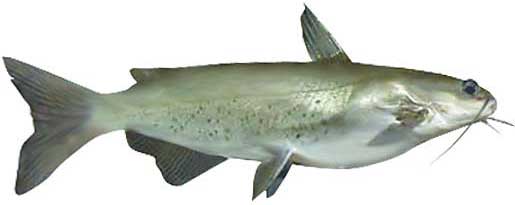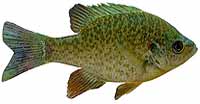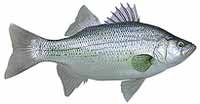Fishing Report For Wheeler Lake, AL
By Rick Seaman
August 16, 2025

Fishing Reports
Popular Fish Species Wheeler Lake, AL
Largemouth Bass
Current Report: Good
SUMMER. Water temperatures are in the high 70's to mid 80's, and summer patterns are in full swing. Bass are feeding shallow for short periods early and late in the day. They are being caught on topwater, crankbaits and swimbaits. Largemouth bass here feed on blueback herring, gizzard shad, threadfin shad, small sunfish and crawfish. During the hotter parts of the day, they are being caught on points, channel edges, and ledges 10 to 25 feet deep. Heavy jigs, big worms and chatterbaits are catching fish on these ledges. The best reports seem to be from anglers fishing around the tailwater of Guntersville Dam, the flats around Decatur from the I-65 Bridge to the Nuclear Plant, and the area around the Elk River inflow.
FALL. When Fall arrives, bass here will follow schools of baitfish into coves and shallow bays where topwater, squarebill crankbaits, swimbaits, and slow-rolled spinnerbaits, have been successful in prior years. As deeper water cools, bait and bass move out to ledges, channel edges, points and humps where flutter spoons are often the ideal bait.
WINTER. Winter will isolate them around slightly deeper structure, flats, points and creek channel bends. They can be found from 20 to 45 feet deep. Here they hold, feeding less frequently, awaiting warmer water to return in Spring. Drop shots, shaky-head worms and flutter spoons work well.
SPRING. Once water temperatures rise into the low 60's, largemouth will move from deep wintering holes, to shallower water just outside spawning areas. Jerkbaits, spinnerbaits and vibrating jigs typically get bites just away from the shoreline. At this time they are preparing for the spawn. Once water warms into the mid to high 60's, they will move into 1 to 4 feet of water, and create nests, then lay their eggs. Immediately afterwards, females move to deeper water and males remain to guard the eggs, and then the fry. After a couple weeks, the males also move to deeper water. Crankbaits, vibrating jigs, plastic worms and swimbaits are good options during this period.
Black & White Crappie
Current Report: Good
Both black crappie and white crappie reside here with white crappie more dominant in murky, shallow water. Black crappie are being caught in clearer water on the main lake.
SUMMER. Water temperatures are currently in the high 70's to mid 80's, and crappie fishing has been good. Now that the spawn is over, and the hot Summer sun is warming the shallows, crappie have retreated to depths of 12 to 20 feet, or embedded 8 to 10 feet deep in heavy vegetation. This is a good time to focus around bridge pilings and docks. Anglers are also locating schools of crappie hanging over deep timber and stumps, above rocky structures and around creek channel edges.
FALL. Baitfish, which will be moving into shallow flats, coves and bays, will draw crappie into these areas, where they will feed heavily in preparation for the cold Winter. Focus on areas around the entry points into creeks, in 10 to 15 feet of water. Small spoons, along with minnows, hair jigs, and crappie jigs, are good options during this feeding marathon.
WINTER. Once the shallows start cooling rapidly, crappie will migrate to deeper holding areas, mostly off shore. At this time they are typically caught using a very slow presentation, in 20 to 30 feet of water. Even though they may not be in contact with the bottom, they generally relate to some cover, or structure change, directly below them. Flutter spoons, minnows and hair jigs all work well fished vertically.
SPRING. In early Spring, crappie begin staging in 8 to 12 feet of water, just outside shallow spawning bays and flats. Spring is the ideal time to be on the water, as crappie have moved shallow to spawn. At that time, they are typically caught in 2 to 6 feet of water. Elk River, First Creek, Second Creek and Spring Creek are popular spots. Docks, brush, wood and vegetation are where most anglers are catching good numbers using small crappie jigs or live minnows. After the spawn, crappie move outside the spawning area and typically hold deeper on the closest cover. Once they move off the beds, anglers are reporting good success using fish finders and forward facing sonar to locate schools of crappie, which tend to stack vertically around cover. Light tackle with 4 lb to 8 lb line is a popular choice.
Channel Catfish
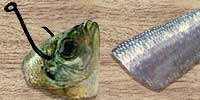

Current Report: Fair To Good
SUMMER. In Summer, slow-moving water, at the river end of the lake draws catfish to feed, in depths from 10 to 25 . They are scattering, locating cover in slightly cooler water. Reports indicate the most successful anglers are using cut bait, shrimp or nightcrawlers. Fishing has been good from late in the day until midnight, along rip-rap, bridge pilings and the mouths of creeks where they intersect the river channel.
FALL. Fall is one of the best times of year for catching channel catfish. They migrate to creek inlets, and flats just off the channels in 10 to 15 feet of water. Drift fishing, while bottom bumping is the most popular tactic here. They remain in these areas and feed aggressively in preparation for Winter.
WINTER. In Winter, the channel cats gather in deep holes and go virtually dormant, especially if water cools into the 40's. They hole up in pockets from 20 to 40 feet deep and await warmer water. Slow presentations, especially cut bait, can still entice strikes.
SPRING. In Spring, when water temperatures rise into the low 60's, channel catfish start their migration into shallow coves and bays, as well as heading up river, often feeding in flowing water. They hold here, and feed aggressively until water warms into the mid 70's, at which time they begin the spawn process in 2 to 8 feet of water. Logs, lay downs, undercut banks and vegetation are good locations for these spawning cats. Anglers are using slip sinkers, 3-way rigs, or Carolina rigs to keep the bait close to the bottom. There are good numbers of 1 1/2 to 5 pound channel catfish being caught, with occasional fish up to 10 pounds.
Fishing Video
Fish species to fish for...
Guide to fishing for largemouth bass, smallmouth bass, spotted bass, channel catfish, blue catfish, black crappie, white crappie, bluegill, redear sunfish, white bass, striped bass, hybrid striped bass and sauger at Wheeler Lake in Alabama.

Wheeler Lake is a 67,000-acre lake with over 1,000 miles of shoreline. Anglers are catching bass, crappie, catfish, white bass, hybrid stripers, sauger, bluegill and other sunfish. Access for fishing from the bank is somewhat limited.
Primary fish species to catch
Click images for fishing tips and details about each species.
Today's Weather & Forecast
Fishing Boat Rentals
Click here for fishing boat rentals.
Public Boat Launch Ramps & Landings
Click here for boat ramps.
Marinas
Click here for marinas.
Fishing License
Click here for a Alabama Fishing License.
Map - Fishing & Access
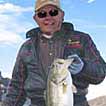
Rick Seaman is a fishing enthusiast with over five decades of fishing experience, a retired tournament fisherman, author of numerous published articles on fishing, and co-author of the book "Bass Fishing - It's not WHAT you throw, It's WHERE you throw it".

Contact Information
Joe Wheeler State Park
4401 McLean Drive
Rogersville, AL 35652
256 247-5466
Fishing lakes in each state
081625
Wheeler Lake, Alabama Report
ALABAMA


This lake provides fishing for a wide variety of fish species in Alabama's second largest reservoir.


